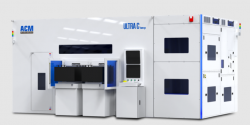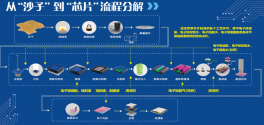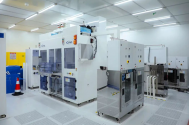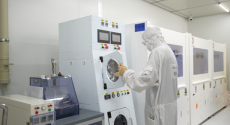ACM Semiconductor Equipment Co., Ltd. (hereinafter referred to as “ACM Shanghai”) a leading supplier of wafer process solutions for semiconductor front-end and advanced wafer-level packaging applications, today launched its new Ultra C bev-p panel edge etch tool for fan-out panel-level packaging (FOPLP) applications.
The equipment is specially designed for edge etching and cleaning in copper-related processes. It can handle edge etching on the front and back sides of the panel at the same time, significantly improving process efficiency and product reliability.
Dr. Hui Wang, Chairman of ACM Shanghai, said:
“ We see the growing importance of fan-out panel-level packaging as the technology meets the evolving needs of modern electronic applications with advantages in integration density, cost efficiency and design flexibility. Thanks to our deep expertise in wet processes, ACM Shanghai’s new Ultra C bev-p tool is one of the first double-sided edge etch tools available for panel-level applications. Together with our Ultra ECP ap-p panel-level horizontal plating tool and Ultra C vac-p negative pressure cleaning tool launched this year, we expect the Ultra C bev-p to advance the industry of large panel advanced packaging with high-precision features and the market for fan-out panel-level packaging technology.”
The Ultra C bev-p equipment uses a wet etch process designed for edge etching and copper residue removal, which plays a vital role in fan-out panel-level packaging technology. This process is critical to effectively avoid electrical shorts, minimize the risk of contamination, and maintain the integrity of subsequent process steps, helping to ensure the durability of the device. The efficiency of this equipment is mainly due to ACM Shanghai's patented technology to meet the unique challenges posed by square panel substrates.
Unlike traditional round wafers, ACM Shanghai's unique design enables precise edge removal, ensuring that processing on warped panels is limited to the edge area. This patented technology is critical to maintaining the integrity of the etching process and delivering the high performance and reliability required for advanced semiconductor technology.
Designed for panel substrates, the Ultra C bev-p is compatible with organic, glass and bonded panels. The Ultra C bev-p can effectively manage the front and back sides of panels ranging from 510mm x 515mm to 600mm x 600mm, with thicknesses ranging from 0.5mm to 3mm. The equipment can handle warpage up to 10mm, ensuring optimal process conditions.
· Advanced panel handling: The Ultra C bev-p is equipped with automatic operation devices to ensure safe and precise handling and transfer of panels.
· Highly efficient copper removal: Ultra C bev-p uses dilute sulfuric acid and peroxide (DSP), a combination of deionized water, sulfuric acid and hydrogen peroxide, to effectively remove copper. In addition, the equipment uses deionized water for rinsing and N2 for final drying to ensure a clean and dry surface.
High throughput: The Ultra C bev-p is capable of running up to six chambers and processing 40 panels per hour (PPH), enabling high-efficiency mass production.
The system has an edge control accuracy of ±0.2mm and a control range of 0-20mm. With a mean time between failures (MTBF) of 500 hours and an uptime of 95%, it provides excellent reliability, stable performance and high operational efficiency.





